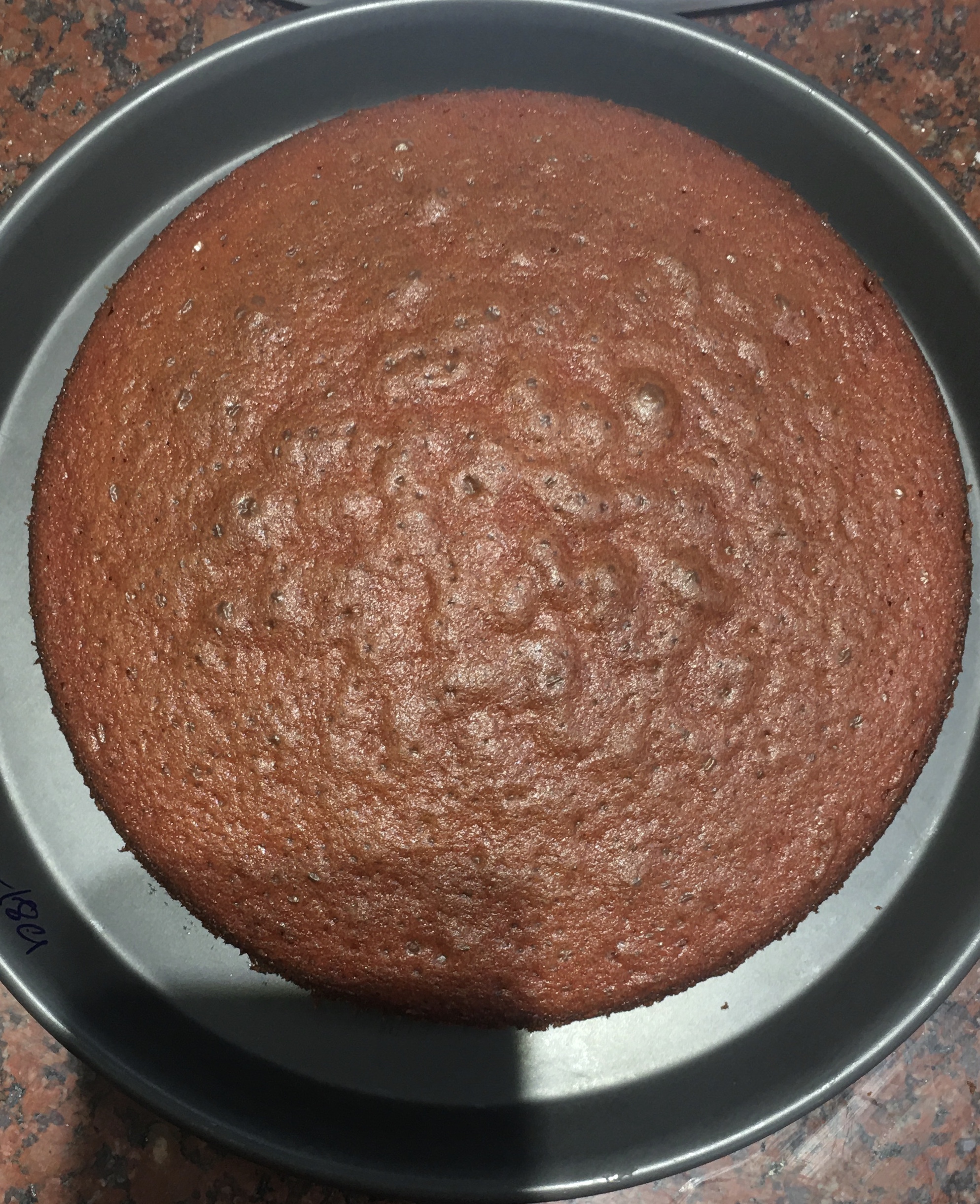Large bubbles appear on the surface of cake after baking
Hi @jonhny123
Can you tell us about ingredients ?
Dear @ufukayyildiz
My ingredients of premix powder: contains sugar, all purpose flour, emulsifier (471,475), whey powder, cocoa powder, SAPP, baking soda, allura red color, vanilla flavor.
After that we add whole eggs, water and vegetable oil and blend the mixture using the paddle. After that, i bake the batter at 175oC.
Thanks!
Hello Colleague :
According to the picture I imagine that the thickness is not enough and the temperature is too much for the thickness.
Maybe, You could start reducing the temperature by 10° Celsius, what I mean is to 165°C.
If the bubbles continue You could change the viscosity of your batter . On way of resolving this is to add potato starch, because this type of starch can significantly increase the viscosity. I think that between 1 or 2 % of finished product is enough.
Another option that I could suggest is to try to develop your own baking powder. The reason why I suggest this is that you can control the speed of leaving agents. For example, SAPP is faster than SALP or SAS so you can control the rise of your batter during the baking process. If any of this is unfamiliar to you, please let me know.
Cheers
Gabriel
Dear @gabriel.barriga
Thanks for your advice. I will try your method for sure!
Well done, I hope you achieve the expected results.
Kind regards
To minimize large bubble formation using all in mixing .is you add the oil last as that is one factor in destabilizing the batter resulting in coalescence of small bubbles to larger bubbles .
What I mean after aerating the batter you add the oil last.at low speed until its absorbed. Btw low quality oil can have a destabilizing effect on emulsion due to impurities.
Further if you can formulate your own baking powder use SALP/ MCP blend to have a uniform crumb texture.
Before you bake tap the cake pan filled with batter to release gas bubbles and bake immediately. Long standing before baking also promote the formation of large bubbles.
The ingredients declaration shows it’s a highly emulsified batter but if that is the cake pan.,there is excess shrinkage for its volume.If you can show us the recipe and the mixing system maybe we can improve it by reformulation …
Hi you can try this mixing and baking process
- Mix premix and whole egg
- Gently pour water or try to use hot water mix until well blended
- Lastly add the vegetable oil
Put it on your desire pan and tap it for 2 to 3 times to remove the bubbles
The bake it at 150c
I would appreciate a recipe or guide formulation of Baking powder for scones.
Scone baking powderbis just the same as commercial baking powder…Msy I know your concern why you need a special one.?
Please let me know your concerns why you want a special baking powder for scones…
That will give us an idea what particular aspect of baking powder that is most important to you as that will guide whats the best formulation for your purpose…
Hi Roy,
Indeed, I used SPP and Sodium Bicarbonate and some starch to prevent reaction. The different grades are available 28,30 and 40. I don’t know at the time if I had the neutralization correct, it was 10 years ago. The scones developed perfect, it was more the shelf life in box that seemed to react.
I would like to produce one for myself again for resale. Any assistance would be appreciated.
The shelf life of baking powder is influenced by the dryness of your filler as well as the uniformity of your baking soda particle size…If you use an ordinary starch filler with high moisture your product will not last long in storage. RE DRY your starch to a moisture content of 8% maximum or get a double dried starch having a moistureof 7 to 8%. before you use it.Ask your sodium bicarbonate supplier to provide you with as much as possible uniform granulation material.
The finished baking powder should be packed in well sealed moisture proof packaging.
Further the ratio is uniform for different grades of SAPP and the NV remains the same .Those numbers are just reaction rates …The higher the number the the more of it reacts at batter stage and less in the oven stage.
For simplest stable ratio: 42 % SAPP28 / 30% NAHCO3, and 28 % low moisture filler.
Hi Roy,
How to prevent MCP and SAPP reacting with the sodium bicarbonate used, tried a commercial starch but moisture was too high.
Thank you saw the recommended recipe now, I will experiment with the fillers.
Hi Wayne… Common starch or flour n contain 10 to 12 % moisture. Too high to be used fir filler in a reactive mixture of acid salt and baking soda.
If you can’t redry starch to acceptable 7%,then try using a blend of 50% calcium carbonate and 50% starch to at least reduce the moisture content of the end product and least prolong for some time it’s shelf life…

